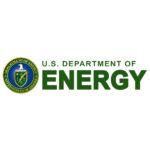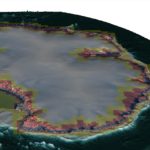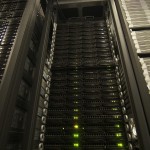The next meeting of the Advanced Scientific Computing Advisory Committee (ASCAC), the federal advisory committee for the US Department of Energy Office of Science’s program on Advanced Scientific Computing Research (ASCR) will take place on Wednesday, September 29th, and Thursday, September 30th, 2021, from 11-3 EDT via Zoom. For information on how to join the meeting, please visit […]
DOE Funds $28M for Scientific Supercomputing Research Projects
The U.S. Department of Energy (DOE) today announced $28 million in funding for five research projects to develop software designed to better leverage DOE supercomputers in fields such as quantum information science and chemical reactions for clean energy applications. A list of projects can be found here. The projects are sponsored by the Offices of Advanced Scientific Computing […]
DOE Announces $34.5M for Data Science and Machine Learning for Climate Solutions
Washington, DC — March 19, 2021 — The U.S. Department of Energy (DOE) today announced up to $34.5 million for research tools for scientific discoveries, including clean energy and climate solutions. Two new funding opportunities will support researchers using data science and computation-based methods—including artificial intelligence and machine learning—to tackle basic science challenges, advance clean […]
Exascale and Beyond: DOE Funds $12M for Adapting Software for Next-Gen Supercomputers
The U.S. Department of Energy (DOE) today announced plans to provide up to $12 million for research aimed at adapting scientific software to run on next-generation of supercomputers. DOE said applications will be open to DOE national laboratories, universities, industry, and nonprofit research institutions. Funding is to be awarded competitively, on the basis of peer […]
Thomas Sterling Eulogizes Rich Brueckner, Ann Redelfs, Steve Tuecke, Lucy Nowell: 4 Leaders Lost to the HPC Community
At his annual keynote address closing out the ISC 2020 conference, Thomas Sterling, Professor of Intelligent Systems Engineering at the University of Indiana, eulogized four members of the HPC community who died over the past year. Here are excerpts from his remarks: It’s my sad duty to, but certainly a responsibility, to note some of […]
Video: Supercomputing the Secrets of Giant Stars
In this video, supercomputing power and algorithms help astrophysicists untangle giant stars’ brightness, temperature, and chemical variations. “As a star becomes redder (and cooler), it becomes more variable. That’s a pretty firm prediction from what we’ve found, and that’s going to be what’s exciting to test in detail.”
Video: Antarctic Ice Sheet Simulations
In this video, the DOE SciDAC-funded BISICLES experiment investigates the millennial-scale vulnerability of the Antarctic Ice Sheet (AIS) due solely to the loss of its ice shelves. Starting at the present-day, the AIS evolves for 1000 years, exposing the floating ice shelves to an extreme thinning rate, which results in their complete collapse. The visualizations show the first 500 years of the simulation — after that point, the ice sheet continues to evolve and retreat, but less dramatically.
Balancing the Load – A Million Cores in Concert
“If you’re doing any kind of parallel simulation, and you have a bit of imbalance, all the other cores have to wait for the slowest one,” Junghans says, a problem that compounds as the computing system’s size grows. “The bigger you go on scale, the more these tiny imbalances matter.” On a system like LANL’s Trinity supercomputer up to 999,999 cores could idle, waiting on a single one to complete a task.
Argo Project Developing OS Technology for Exascale
Today’s operating systems were not developed with the immense complexity of Exascale in mind. Now, researchers at Argonne National Lab are preparing for HPC’s next wave, where the operating system will have to assume new roles in synchronizing and coordinating tasks. “The Argo team is making several of its experimental OS modifications available. Beckman expects to test them on large machines at Argonne and elsewhere in the next year.”











